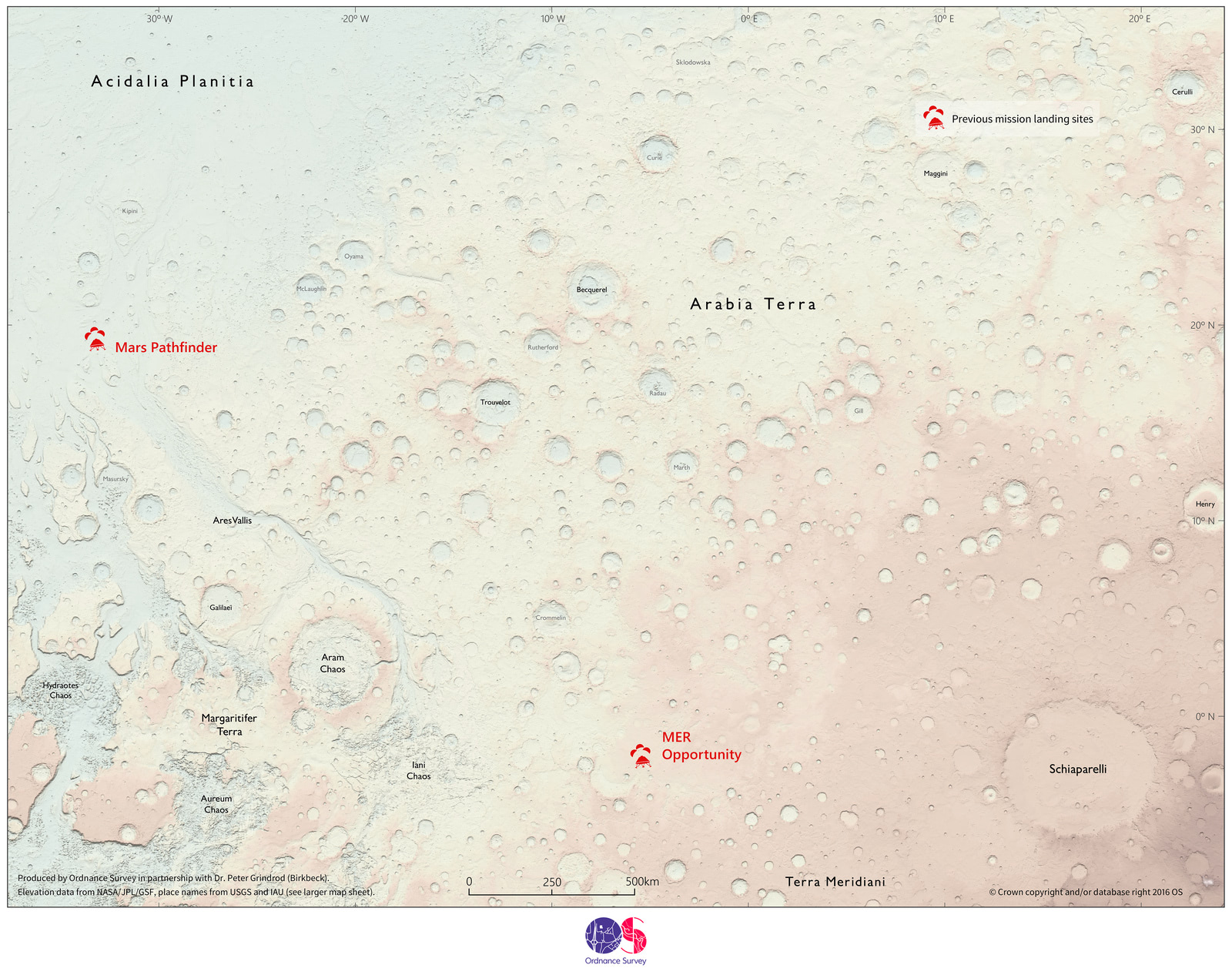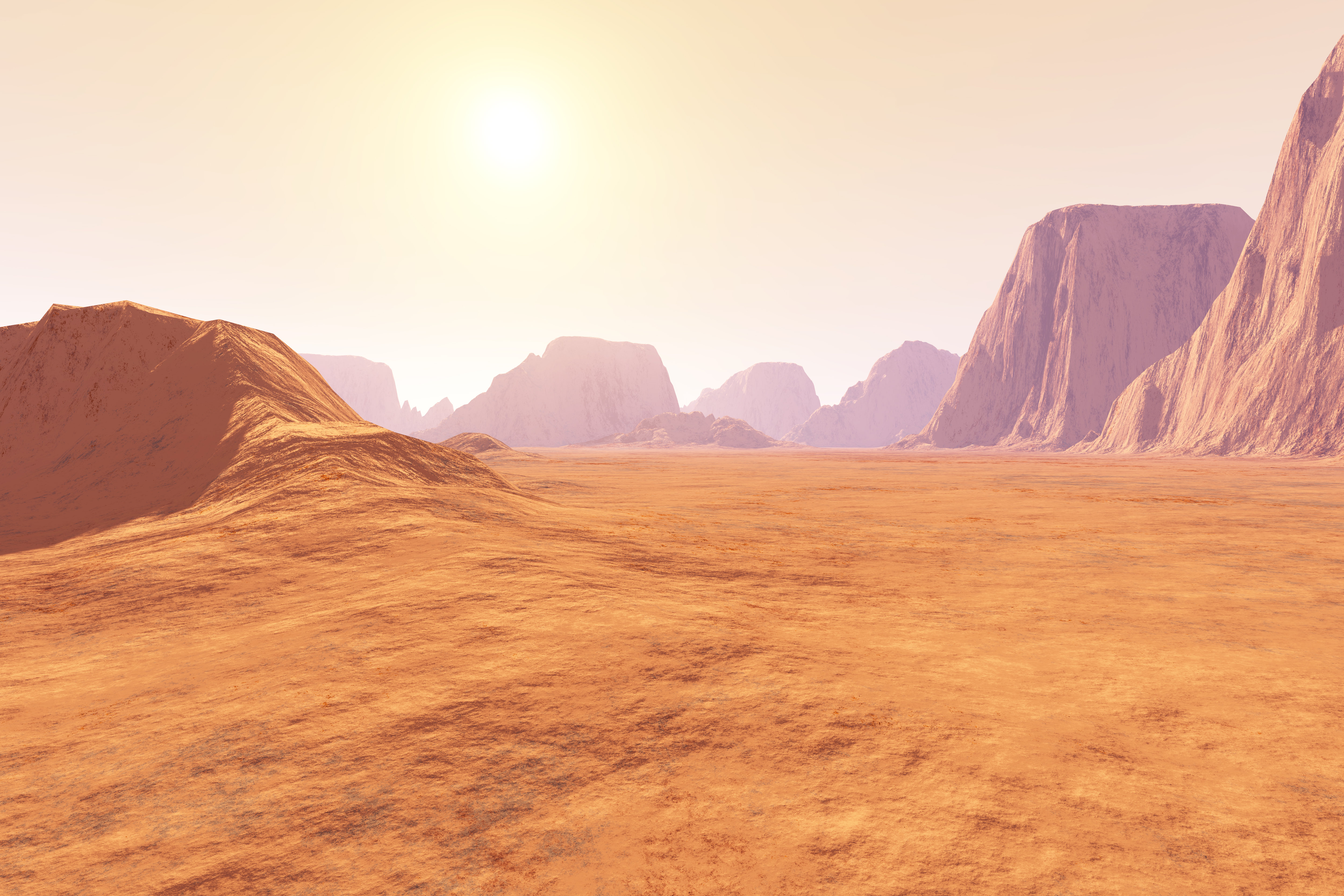If we'll ever get to go to Mars as tourists, we wouldn't get lost. Ordnance Survey, the official British mapping agency, recently released a new detailed map of the Red Planet. What makes it so special is its simplicity. The focus for Chris Wesson, OS's cartographic design consultant, was to keep it easy for anybody to understand, whereas planetary maps are designed with merely a scientific angle in mind.
The map is based on open data of the Martian surface captured by NASA. An high-resolution version has been uploaded on the Ordnance Survey's Flickr page, but an old-fashioned paper map has been also published. The complete one covers 3,672 x 2,721 kilometers (2,281 x 1,690 miles) at a scale of one to four million. This is their first map of another planet. This very old agency (225 years old this year) designed it as an experiment to understand which techniques could be potentially used for future missions to Mars.
"We have set out from the start to treat the Mars data no different to how we would treat [standard British mapping] data or any other Earth-based geography" Wesson said. "The key ingredients to this style are the soft colour palette of the base combined with the traditional map features such as contours and grid lines, and the map sheet layout complete with legend".

One of the main issues in the process was the Red Planet's topography, which is very different from the one of the Earth. In fact, its surface is highly bumpy with plenty of craters, each of several hundreds of meters deep. They had to come up with new different colors and surface exaggerations.
"Becoming more familiar with space is something that interests us all and the opportunity to apply our innovative cartography and mapping tradecraft to a different planet was something we couldn't resist" said Ordnance Survey's director of products, David Henderson.
It's really thrilling to eventually picture us as tourists on Mars, checking this map to avoid getting lost in the several craters, but Wesson is not that optimistic: "It is a nice thought, that one day people could pinpoint the landscape around them from a map just as in the British countryside, but the map may be quite different by then".
Source: The Telegraph. Images: Shutterstock, Ordnance Survey

Share your thoughts and join the technology debate!
Be the first to comment